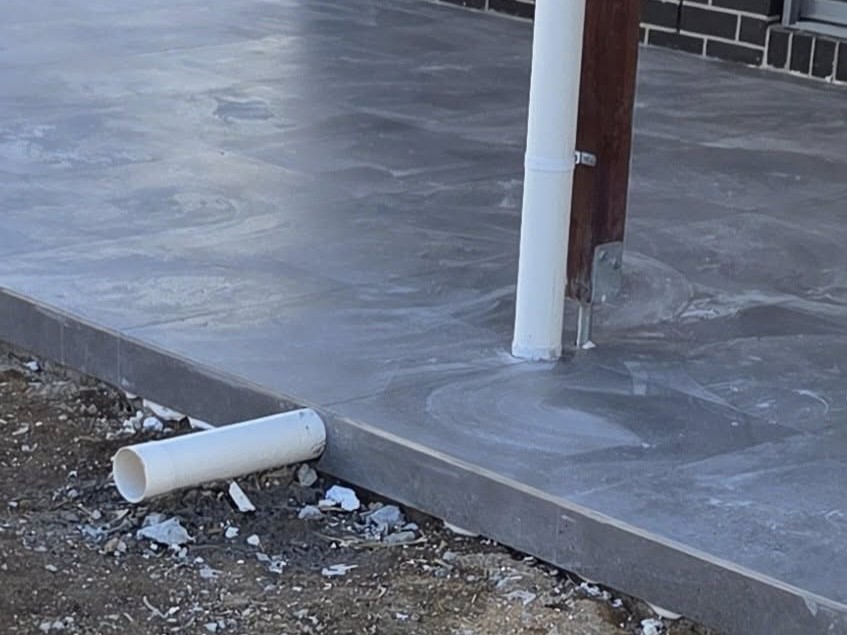Stormwater is easily the most overlooked, under-engineered service in or around your house. Despite local authorities insisting on the submission of plans promising to adhere to their requirements prior to construction, I frequently run into stormwater nightmares on builds of all ages.
Take for example the photo shown above. This was posted on a facebook a group this morning where the homeowner was questioning the suitability of this appalling stormwater installation on a new build (August 2025). The layman’s first question about this is, “where does this stormwater go?”. Theres more questions beyond that – such as, what did the stormwater plan say? Was this somehow not included on the stormwater plan? What depth of cover is that? Are we really running 90mm pipe on grade in the ground (or above ground in this case)? And there’s other finger-pointing-type rhetorical questions we can ask which are intended to insult the people responsible for this abomination.
If the homeowner in this case does not have plans for the stormwater, he could be stuck with whatever the builder hands over, providing the builder meets the obligations set out in the building contract. If he manages to get the builder to reinstall this pipework, you can imagine there might be plenty of resistance and arguing before that happens. The only way to safeguard yourself against having a similar situation arise on your build, is to have clear documentation to include as part of your building contract.
Poor workmanship isn’t the only bad outcome you need to avoid – you also need a stormwater drain that performs well. Just last week I worked at a townhouse in Tea Tree Gully where they had sandbags in front of their front door to stop the ingress of stormwater into their house. I’ve seen all kinds of stormwater dramas many times, and you don’t want any of it.
The current relevant code for stormwater installations is AS/NZS 3500.3: 2025. While this code allows for the installation of 90mm stormwater pipe on grade in the ground, I advise against it for two reasons. The first reason is that the pipe material is thin and relatively weak, the second reason is that the fittings are internally square on changes of direction. My first objection doesn’t require further explanation but second one might not make sense until you go to bunnings and have a look at the storm fittings on the shelf. Consider the internal radius of a 90° bend and you’ll see that there is no radius. Now head over to the sewer fittings and compare the internal radius of a 100mm 90° and you can see the difference.
Why should I care about the difference between 90mm and 100mm pipe and fittings?
The fragile nature of 90mm pipe and fittings makes it relatively easy for tree roots to intrude, and they do – I’ve seen it more times than I can remember. 100mm pipe and fittings are much stronger and only suffer tree root intrusion when significant ground movement has managed to break a fitting. What this ends up meaning is that the likelihood of needing to perform reactive maintenance on a 90mm drain is high, and its serviceability is low. Conversely, the likelihood of needing to clear a 100mm storm drain is low and its serviceability is high.
To clarify why the 100mm is very serviceable and the 90mm is not, you need to picture a hose being pushed into and pulled out of these fittings when they are buried in the ground and not accessible. You might be able to push a hydrojet hose and nozzle into the 90mm fittings, but withdrawing the hose against that sharp internal corner is nowhere near as easy.
My recommendation will always be to use 100mm pipe in the ground, and only use 90mm pipe for downpipes.
Contact me to document your stormwater drain before you build. Contact Chris Tyson 0411 296 827 to engineer a solution to your stormwater drain requirements on an established site.

